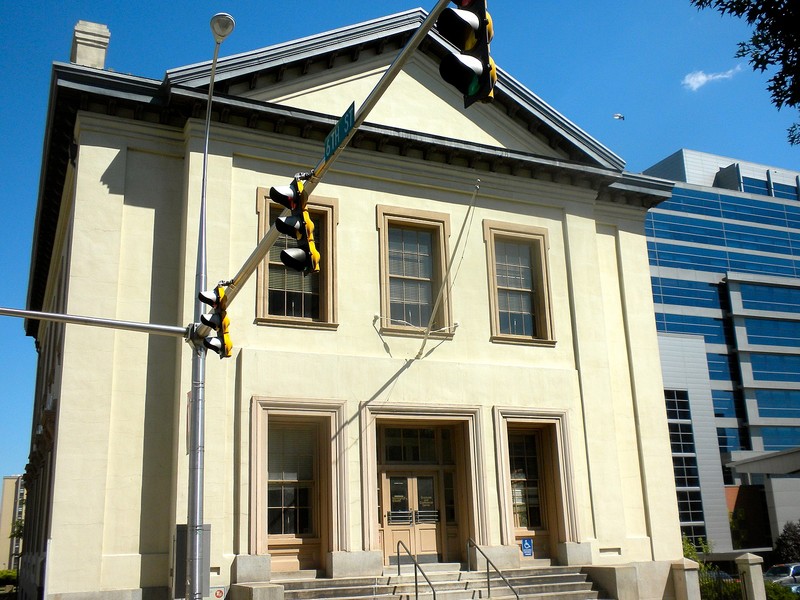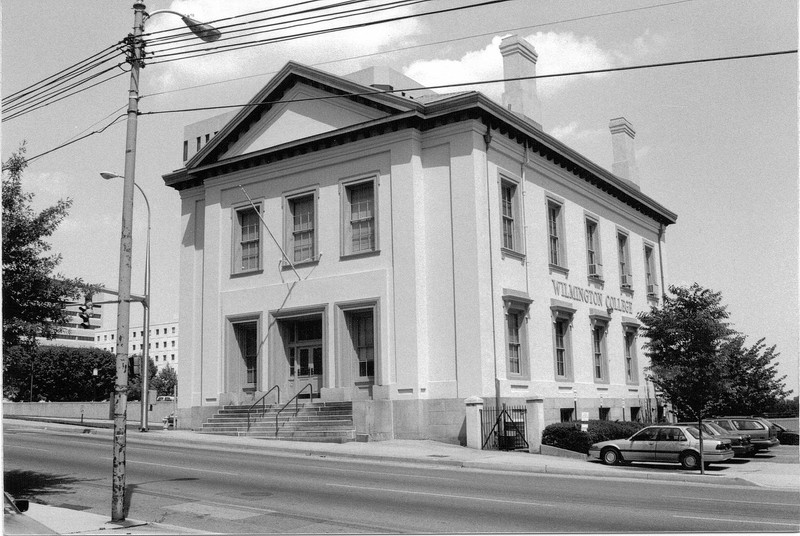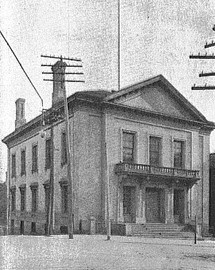Old Customshouse of Wilmington, Delaware
Introduction
Text-to-speech Audio
Images
2010 photo of Old Customshouse in Wilmington, DE.

1991 photo of Old Customshouse in Wilmington, DE.

1900 photo of Old Customshouse in Wilmington, DE.

Backstory and Context
Text-to-speech Audio
The Old Customshouse opened in 1855. Delaware's first customs house sat in New Castle before moving to Wilmington in 1800. In 1837, the First Board of Trade emerged, intending to promote trade through Wilmington's port. The organization's first move involved appealing to Congress for a permanent custom house. Construction began in 1852 on the historic customs building, which eventually supported the Customs Department, Federal Court, and Post Office. Wilmington has since matured into an international port city that employs more than 5,000 people and generates more than $400 million in revenue.
The U.S. Congress authorized on August 31, 1852 construction of Wilmington's Customs House. Delaware Representative, George Read Riddle, sponsored the bill through the House; he also purchased Moore's Carriage Works in Wilmington in 1853. Ammi Burnham Young, who Congress appointed Supervising Architect of the Offices of Construction of the Treasury Department in 1852, designed the two-story Greek revival building consisting of a cut stone base, stucco exterior walls, and four smokestacks.
Builders employed an innovative foundry technology (for the era) to install the structure's iron hip roof, a testament to Wilmington's maturing ironworks industry. The iron founding and fabricating business got its start in Delaware with the formation of Phoenix Foundry in 1826. McCullough and Company, who handled the Customhouse roofing, opened in 1847 along with several other ironworks companies by the start of the Civil War. Indeed, by 1860, the iron industry evolved into Delaware's second most significant industry and, by 1868, Wilmington produced more iron ships than the rest of the United States combined.
Delaware Works Progress Administration occupied the building in 1937 (part of FDR's New Deal initiative) when the post office moved to a new home. During the Korean and Vietnam wars, drafted soldiers reported to the Old Customshouse, which served as the military's induction site for drafted soldiers. During the 1960s, the city debated the usefulness of what had become the vacant Old Customshouse. Eventually, the Custom House became Delaware's first example of a private building on the National Register renovated for public use. Wilmington College took over the Old Customshouse and subsequently remodeled it in 1981. The college remained in the building until 2004 and then sold it to investors in 2008; its current status remains unclear.
The Old Customhouse stands as one of seventy Federal buildings constructed during Ammi B. Young's role as Supervising Architect of the Offices of Construction of the Treasury Department from 1852 to 1862. The building serves as a reminder of when Wilmington developed into a burgeoning port city and an ironworks hub. Today, Wilmington serves as a major international port.
Sources
Dayton, Richard L. "Nomination Form: Old Customs House." National Register of Historic Places. nps.gov. November 21, 2011. https://npgallery.nps.gov/GetAsset/7dab6c91-6817-410b-ae2f-8925554996b3/.
Hoffecker, Carol E. Wilmington, Delaware: Portrait of an Industrial City, 1830-1910. Charlottesville: The University Press of Virginia, 1974. Digital copy found at delaware.gov. https://archivesfiles.delaware.gov/ebooks/Wilmington,_Delaware_Portrait_of_an_Industrial_City.pdf.
Maynard, W. Barksdale. "Old Custom House (Old Federal Building)." Society of Architectural Historians. SAH Archipedia. Accessed January 27, 2021. https://sah-archipedia.org/buildings/DE-01-WL21.
By Smallbones - Own work, Public Domain, https://commons.wikimedia.org/w/index.php?curid=10698136
By Tommyboymee - Own work, CC BY-SA 4.0, https://commons.wikimedia.org/w/index.php?curid=44922770
By U. S. Treasury Department, Washington, DC 1901 - https://archive.org/details/historyofpublicb00unitde, Public Domain, https://commons.wikimedia.org/w/index.php?curid=44923010
